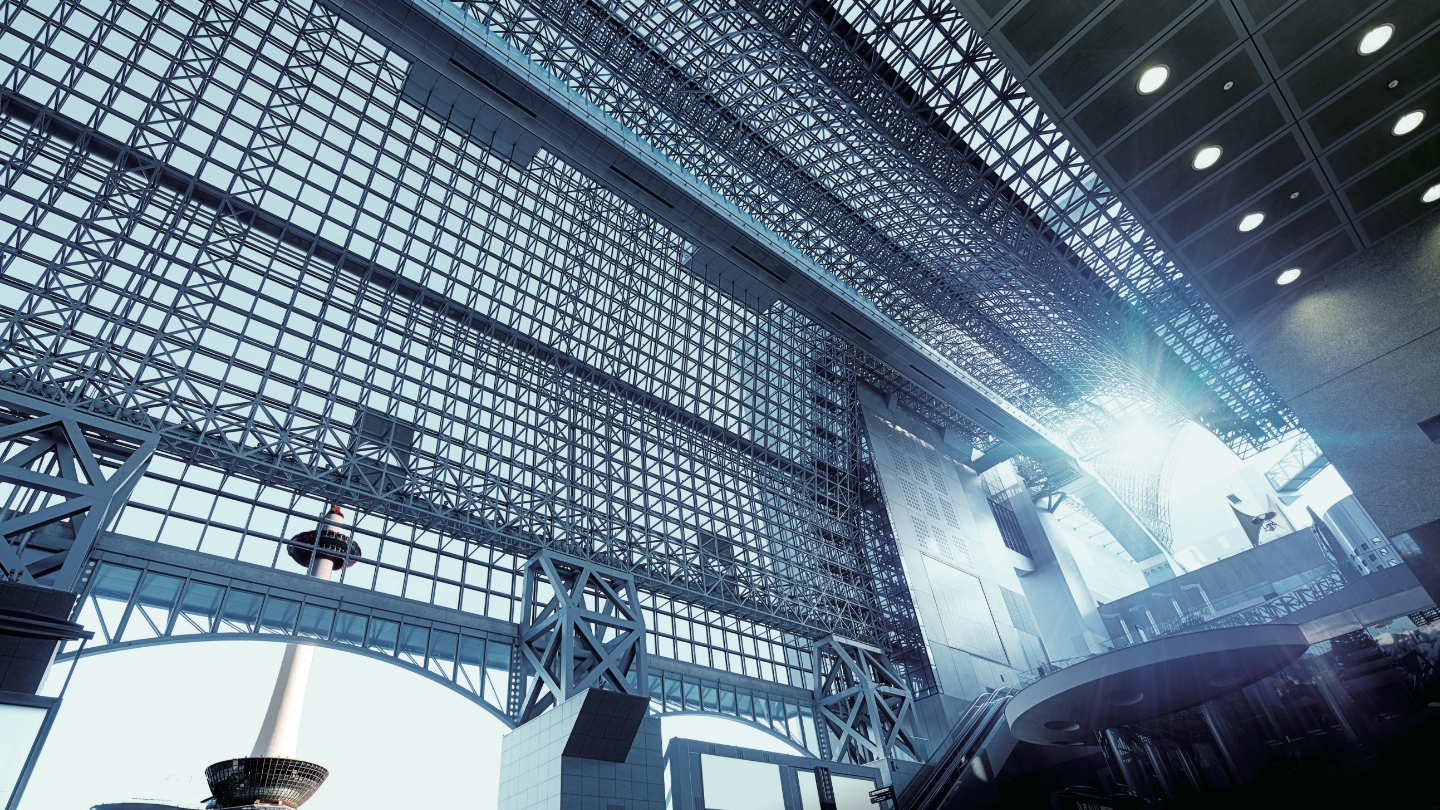Introduction
Kyoto Station is not just a transportation hub, but an architectural masterpiece blending modern design with traditional aesthetics. As the first stop for visitors entering this thousand-year-old capital, Kyoto Station sets the stage for an unforgettable journey with its unique futuristic style.
Key Information at a Glance
- Built: 1997 (coinciding with Kyoto’s 1200th anniversary as a capital)
- Architect: Hiroshi Hara (who also designed Osaka’s Umeda Sky Building)
- Main features: Giant central hall “Matrix”, elevated walkway “Skyway”
- Transportation: JR lines (including Tokaido Shinkansen), Kintetsu Railway, Karasuma Subway Line
- Shopping and dining: Isetan Department Store, Porta underground shopping mall
- Observation deck: Open-air deck on the 15th floor
Historical Background
Completed in 1997, marking Kyoto’s 1200th anniversary as a capital, Kyoto Station was designed by renowned architect Hiroshi Hara. This modern structure ingeniously combines Kyoto’s historical essence with avant-garde design. Its iconic giant central hall, “Matrix”, with its steel beam structure, not only symbolizes the station’s framework but also reflects Kyoto’s unique grid-like street layout.
Main Attractions
1. Matrix Central Hall
This grand space is the heart of Kyoto Station. Its immense steel-structured roof is awe-inspiring, functioning not just as a practical space but as a work of art showcasing modern architectural aesthetics.
2. Skyway
- Open: 10:00 – 22:00
- Admission: Free
Located on the 11th floor, the Skyway allows visitors to walk 45 meters above the central hall, offering glass-walled views of the entire station and Kyoto cityscape. It’s the best spot to appreciate the beauty of Kyoto Station’s architecture.
3. Observation Deck
- Open: 24 hours
- Admission: Free
While the view from the open-air observation deck on the top floor of Kyoto Station is somewhat limited, it still offers a good vantage point to overlook Kyoto city.
4. Isetan Department Store
- Hours: 10:00 – 20:00 (Restaurants 11:00 – 23:00)
Occupying ten floors on the west side of the station, Isetan offers a wide range of shopping options from fashion to local specialties. There’s also a small art museum on the 7th floor and numerous restaurants on the 11th floor.
5. Porta Underground Shopping Mall
- Shops: 10:00 – 20:00
- Restaurants: 11:00 – 22:00
Connected to the Karasuma Subway Line, Porta underground mall houses about 100 shops and restaurants, ideal for shopping and dining.
Best Time to Visit
Kyoto Station is open year-round, but it’s advisable to avoid peak periods like Golden Week (late April to early May) and Obon Festival (mid-August). Visiting in the evening allows you to enjoy beautiful sunsets and night views.
Transportation Guide
As Kyoto’s transportation hub, Kyoto Station offers multiple transit options:
- JR lines (including Shinkansen)
- Kintetsu Railway
- Karasuma Subway Line
- City buses and long-distance coaches
The large bus terminal in front of the station provides easy access to Kyoto’s major attractions.
Opening Hours and Ticket Information
As a public transportation facility, Kyoto Station is open 24/7. Main attractions like the Skyway and observation deck are free to access. Specific shopping areas and restaurants may have different operating hours, so please check on-site information.
Visitor Tips and Advice
- Utilize the tourist information centers in the station for multilingual travel information.
- Luggage storage services are available in the basement; coin lockers might fill up during peak times.
- Don’t miss the food courts to experience various Japanese cuisines.
- Use IC cards (like ICOCA or Suica) for convenient access to public transportation.
- Free Wi-Fi is available throughout the station.
Official Website
Conclusion
Kyoto Station is not just a transportation hub, but an architectural masterpiece symbolizing Kyoto’s long history and modern vitality. Whether you’re a first-time visitor to Kyoto or a departing traveler, it’s worth spending time exploring this unique building. It not only satisfies your shopping and dining needs but also provides a perfect finale to your Kyoto journey.

Leave a Reply